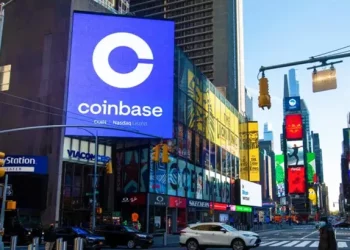Binance, one of the largest and most popular cryptocurrency exchanges globally, offers a peer-to-peer (P2P) trading platform that allows users to buy and sell cryptocurrencies directly with each other. Binance’s P2P platform has gained significant traction due to its low fees, high liquidity, and global reach. Becoming a Binance P2P merchant offers an opportunity to earn a profit by acting as an intermediary between buyers and sellers. If you want to join the growing ecosystem of Binance P2P merchants, this guide will walk you through the process, from registration to understanding the requirements and strategies for success.
What Is Binance P2P?
Binance P2P is a decentralized marketplace where users can buy and sell cryptocurrencies like Bitcoin (BTC), Ethereum (ETH), Tether (USDT), and many others directly with each other. It eliminates the need for a centralized intermediary, allowing transactions to be conducted securely and privately. Traders can offer their services as P2P merchants, acting as middlemen who facilitate transactions between buyers and sellers while ensuring the process is safe, transparent, and efficient.
As a P2P merchant, you earn money by charging a margin for your services and helping others complete their transactions. This could include buying cryptocurrency from sellers at a lower price and selling it to buyers at a slightly higher price, taking advantage of the spread.
Why Become a Binance P2P Merchant?
Low Fees: Binance P2P offers some of the lowest transaction fees in the cryptocurrency industry, making it an attractive platform for merchants.
Global Reach: Binance is a globally recognized exchange with millions of active users. As a Binance P2P merchant, you’ll have access to a large, diverse, and active market.
Easy Access to Liquidity: Due to Binance’s huge user base, liquidity on the P2P platform is typically high, meaning merchants can buy and sell large amounts of cryptocurrency without experiencing significant price fluctuations.
Flexibility: As a P2P merchant, you have the flexibility to set your own trading terms, including the types of payment methods you accept, the cryptocurrencies you trade, and the prices you offer.
Increased Profitability: You can earn a profit by setting a margin on trades, especially if you are skilled at identifying favorable market conditions.
How to Become a Binance P2P Merchant
Here’s a step-by-step guide on how to become a Binance P2P merchant:
Step 1: Create a Binance Account
To begin, you need a verified Binance account. If you don’t already have one, follow these steps:
Visit the Binance website or download the Binance mobile app.
Click on the “Sign Up” button and provide your email address, phone number, or use a referral code if available.
Complete the verification process, which includes identity verification (KYC). Binance requires users to verify their identity by uploading a government-issued ID and a selfie to ensure that you comply with regulations.
Step 2: Enable P2P Trading
Once you’ve registered and verified your account, the next step is to enable P2P trading.
Log into your Binance account.
On the top menu, select “P2P Trading.”
You will be directed to the P2P trading platform. If it’s your first time, you might be prompted to complete additional security settings, such as enabling Two-Factor Authentication (2FA), which will add an extra layer of protection to your account.
Next, you will need to complete the “P2P Merchant” application process. This process is designed to ensure you understand the risks and responsibilities of being a P2P merchant.
Step 3: Understand the Binance P2P Merchant Requirements
Before you start trading as a P2P merchant, there are certain requirements you must meet:
Trade History: You must have completed a minimum number of trades on Binance P2P as a regular user before you can apply to become a merchant. Typically, this involves a minimum of 10 completed orders, but this number may vary depending on your region.
Identity Verification: Your account needs to be fully verified (KYC complete). This ensures that Binance can verify your identity and that you are complying with their security and regulatory standards.
Deposit: Some regions require merchants to deposit a certain amount of funds into their Binance account before they can apply to become a merchant. The deposit amount varies based on your location.
Merchant Application: Submit a merchant application on the Binance platform. During this process, Binance will review your trade history, account security, and other criteria to determine whether you are eligible to become a P2P merchant.
Agreement to Terms and Conditions: As a P2P merchant, you will need to agree to the Binance P2P Merchant Agreement. This outlines your responsibilities and the rules you must follow when facilitating trades.
Step 4: Set Up Your Merchant Account
Once your application is approved, you can officially set up your merchant account. Follow these steps:
Access the Merchant Dashboard: After approval, go to the P2P dashboard and access your merchant account settings.
Set Your Payment Methods: You’ll need to specify which payment methods you accept for P2P transactions. Binance supports various payment options, including bank transfers, online wallets, and local payment methods specific to your region.
Set Your Trading Terms: As a merchant, you have the ability to set your own terms. This includes the prices at which you buy and sell cryptocurrencies, the amount of cryptocurrency you are willing to trade, and other relevant conditions. You can also specify the geographical regions or currencies you prefer to work with.
Enable Advanced Features (Optional): Binance offers additional features for merchants, including the ability to set auto-matching, which automatically matches your offers with buyers and sellers based on your preferences.
Step 5: Start Trading
Now that your account is set up, you can begin trading on Binance P2P. You can choose to either:
Post Advertisements: As a merchant, you can create ads offering to buy or sell cryptocurrencies. You can customize the amount, price, and payment method for each ad.
Match Offers Automatically: If you prefer a more hands-off approach, you can enable auto-matching, which allows Binance’s system to automatically pair you with buyers and sellers based on your preferences.
Step 6: Execute Transactions
As a P2P merchant, your role is to ensure that transactions are executed smoothly. Here’s how to handle transactions:
Place Orders: You will either place buy or sell orders, offering specific amounts of cryptocurrency at a set price.
Confirm Payment: When a buyer or seller chooses your offer, the system will place the cryptocurrency in escrow. You will receive a notification when the other party completes their payment.
Release Cryptocurrency: Once the payment is confirmed, you will release the cryptocurrency from escrow to the buyer or seller.
Always ensure that you are following the Binance platform’s guidelines for completing transactions and resolving disputes.
Step 7: Manage Your Reputation
As a P2P merchant, reputation is critical. Buyers and sellers can rate your performance, so maintaining a positive reputation is key to gaining more trades and building trust. Some tips to improve your reputation:
Respond Quickly: Being responsive and maintaining a quick response time will help you get more trades.
Be Professional: Keep communication polite, clear, and professional to ensure smooth transactions.
Complete Trades Safely: Always follow Binance’s security protocols and avoid rushing or cutting corners during a trade.
Step 8: Learn the Risks Involved
While Binance P2P offers many opportunities, there are risks involved, such as:
Fraudulent Users: Some buyers or sellers may attempt to defraud you by making false claims or providing incorrect payment proof. Always confirm payments before releasing cryptocurrency.
Market Volatility: Cryptocurrency prices can be volatile, and the market can change rapidly. Be mindful of the risks involved in pricing and trading.
Step 9: Optimize Your Trading Strategy
To become a successful Binance P2P merchant, consider the following strategies:
Monitor Market Trends: Stay informed about cryptocurrency market trends and adjust your pricing accordingly.
Offer Competitive Prices: Offer competitive prices that attract buyers and sellers while ensuring a fair margin for yourself.
Diversify Payment Methods: Accept a variety of payment methods to expand your customer base and make it easier for users to complete transactions.
Leverage Arbitrage: If you are skilled in arbitrage, you can take advantage of price differences across different exchanges to buy low and sell high.
Conclusion
Becoming a Binance P2P merchant offers a great opportunity to profit from the fast-growing cryptocurrency market. By following the steps outlined in this guide, you can start your journey as a P2P merchant, offering buyers and sellers a trusted platform for seamless cryptocurrency transactions. As with any business venture, success comes with dedication, a strong reputation, and an understanding of market dynamics. Stay patient, professional, and diligent, and you’ll find success in Binance’s P2P ecosystem.
Related topics:

















